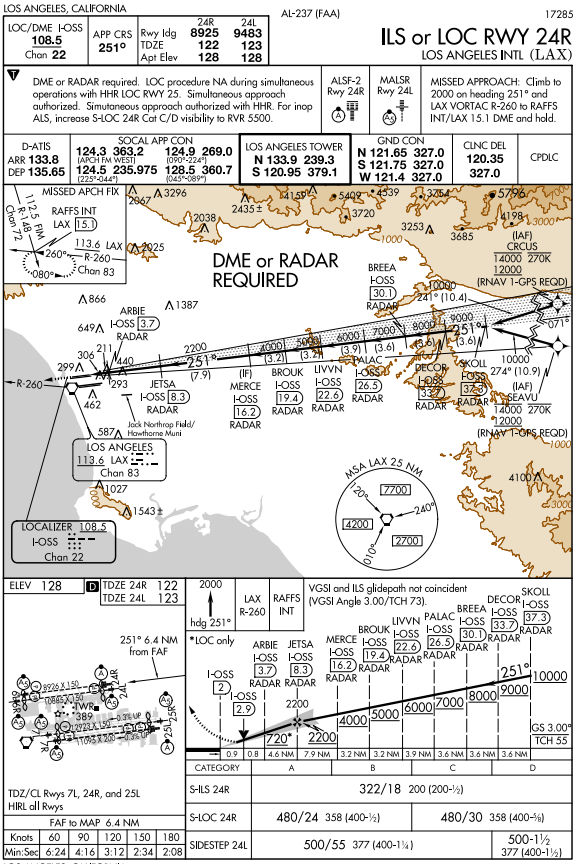

This is one of the most common approaches flown in ZLA. For aircraft arriving over BAYST from the N and W it will almost always be a radar vectored approach. For aircraft arriving from the NE-SE on the ANJLL, HLYWD, or SNSTT STARs, it will normally be an approach beginning from the CRCUS or SEAVU IAF. If the aircraft will overfly one of the IAFs for this approach, it may be cleared for an approach using the phraseology in section 4-8.
“N123SX, cleared I-L-S runway two four right approach.”

Most commonly, aircraft will be radar vectored to this approach if they are not flying the ANJLL/HLYWD arrivals. As we discussed there are several rules which need to be complied with in order to vector to the final approach course. First, he must be vectored at least three miles from the final approach fix (on a precision approach, the final approach fix is depicted by the “lightning bolt” symbol). So your vector must result in the pilot intercepting final at least 3 miles outside JETSA on this approach. Second he must intercept final at or below the glideslope and at or above the minimum charted glideslope intercept altitude (which is 2200’ for this approach, depicted by the same “lightning bolt” symbol). Finally, the intercept angle must be 30 degrees or less. Since the final approach course is 249, the heading to intercept should be in the range of 220-280.
Let’s say we’re vectoring this aircraft to final off the IRNMN arrival. The aircraft must intercept final at least 3 miles from JETSA, so we probably should initiate the turn so he’ll be at least 5 miles from JETSA as he rolls out on his intercept heading. If he does intercept final exactly three miles from JETSA, he’ll be about 10 miles from the runway and the glideslope at that point will be at roughly 3000’ (using the 300’ per mile rule). So the assigned altitude should be no higher than 3000’ (also the aircraft’s actual altitude should be no higher than 3000’ when he intercepts final). The minimum charted glideslope intercept altitude is 2200’, so the assigned altitude should be no lower than 2200’. In this case the MVA is no factor, since it is 1900’ in this area. The phraseology for the approach clearance should be:
“N123SX, 6 miles from JETSA, turn right heading two two zero, maintain two thousand two hundred until established on the localizer, cleared I-L-S runway two four right approach.”
The assigned heading could be anything from 225-245 to intercept final and the assigned altitude could be anything between 2200’ and 3000’.